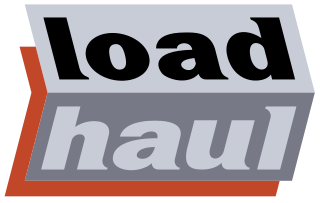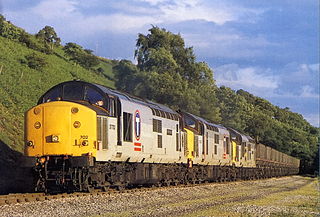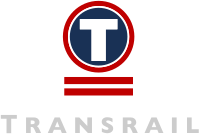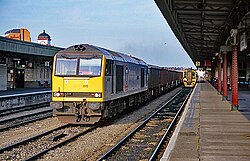British Railways (BR), which from 1965 traded as British Rail, was a state-owned company that operated most of the overground rail transport in Great Britain from 1948 to 1997. It was formed from the nationalisation of the Big Four British railway companies, and was privatised in stages between 1994 and 1997. Originally a trading brand of the Railway Executive of the British Transport Commission, it became an independent statutory corporation in January 1963, when it was formally renamed the British Railways Board.

Arriva Trains Northern was a train operating company in England owned by Arriva that operated the Regional Railways North East franchise from March 1997 until December 2004. Arriva resumed operating Northern train services again on 1 April 2016 under the Northern brand but ceased again on 29 February 2020.

DB Cargo UK, is a British rail freight company headquartered in Doncaster, England.
The privatisation of British Rail was the process by which ownership and operation of the railways of Great Britain passed from government control into private hands. Begun in 1994, it had been completed by 1997. The deregulation of the industry was initiated by EU Directive 91/440 in 1991, which aimed to create a more efficient rail network by creating greater competition.

British Rail was the brand image of the nationalised railway owner and operator in Great Britain, the British Railways Board, used from 1965 until its breakup and sell-off from 1993 onwards.

Rail Express Systems (RES) was a sector of British Rail. This sector was responsible for transport of mail and parcels, including the travelling post office trains, as well as taking over charter operations from InterCity and haulage of the Royal Train.

Loadhaul Ltd. was a railfreight operator based in the north-east of the United Kingdom. It was formed in 1994, as part of the privatisation of British Rail, and acquired in 1996 by a consortium headed by Wisconsin Central, then merged into a new company English Welsh & Scottish Railway. It is now part of DB Cargo.

Mainline Freight was a trainload rail freight operator based in Islington, London, England with operations extending to Yorkshire in the north and Somerset in the west. It was formed from part of British Rail's Trainload Freight division as part of the privatisation of British Rail.

Railfreight Distribution was a sub-sector of British Rail, created by the division in 1987 of British Rail's previous Railfreight sector. It was responsible for non-trainload freight operations, as well as Freightliner and Intermodal services. In its early years, the division was occasionally referred to as Speedlink Distribution. It was later responsible for freight operations through the Channel Tunnel.

The British Rail Class 37 is a diesel-electric locomotive. Also known as the English Electric Type 3, the class was ordered as part of the British Rail modernisation plan. They were numbered in two series, D6600–D6608 and D6700–D6999.

The British Rail Class 92 is a dual-voltage electric locomotive, which can run on 25 kV AC from overhead wires or 750 V DC from a third rail. It was designed specifically to operate services through the Channel Tunnel between Great Britain and France. Eurotunnel indicates the Class 92 locomotive as the reference for other locomotives which railway undertakings might want to get certified for usage in the Channel tunnel.
Trainload Freight was the sector of British Rail responsible for trainload freight services. The division was subdivided into four sub-sectors; coal, petroleum, metals and construction.

The British Rail Class 60 is a class of Co-Co heavy freight diesel-electric locomotives built by Brush Traction. They are nicknamed Tugs by rail enthusiasts.

The British Rail Class 56 is a type of diesel locomotive designed for heavy freight work. It is a Type 5 locomotive, with a Ruston-Paxman power unit developing 3,250 bhp, and has a Co-Co wheel arrangement. Enthusiasts nicknamed them "Gridirons", due to the grid-like horn cover on the locomotive's cab ends fitted to nos. 56056 onwards. Under its Romanian railway factory nomenclature, the locomotive was named Electroputere LDE 3500, with LDE coming from Locomotivă Diesel-Electrică and the 3500 being the planned horsepower output.

The British Rail Class 59 is a fleet of Co-Co diesel-electric locomotives built between 1985 and 1995 by the Electro-Motive Division of General Motors for use in Great Britain. A total of 15 locomotives were built for three different operators.

Caledonian Sleeper is the collective name for overnight sleeper train services between London and Scotland, in the United Kingdom. It is one of only two currently operating sleeper services on the railway in the United Kingdom, the other being the Night Riviera which runs between London and Penzance.

Wisconsin Central Ltd. is a railroad subsidiary of Canadian National. At one time, its parent Wisconsin Central Transportation Corporation owned or operated railroads in the United States, Canada, the United Kingdom, New Zealand, and Australia.
Speedlink was a wagonload freight service that used air-braked wagons and was operated by British Rail from 1977 to 1991.

The railway network in Great Britain has been used to transport goods of various types and in varying volumes since the early 19th century. Network Rail, which owns and maintains the network, aims to increase the amount of goods carried by rail. In 2015–16 Britain's railways moved 17.8 billion net tonne kilometres, a 20% fall compared to 2014–15. Coal accounted for 13.1% of goods transport in Britain, down considerably from previous years. There are no goods transported by railway in Northern Ireland.

















